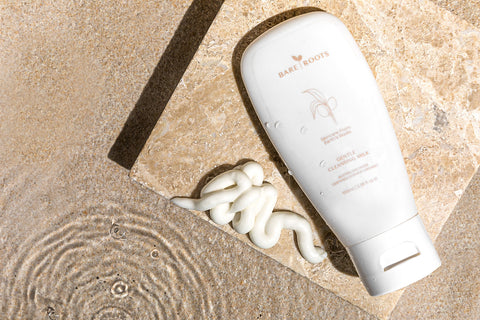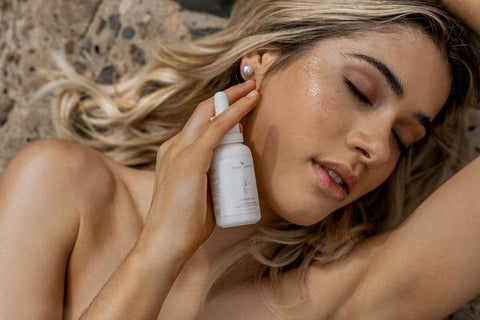When embarking on a new skincare regime or even tweaking an existing one, there is one first step to your routine that you need to get absolutely right. Your cleanser.
A facial cleanser, despite being a wash off product, really sets the tone to how well successive products are received and how clean & supported your skin is after using it.
You can use the most beneficial serums and moisturisers in the world but if your using an unsuitable cleanser, you may see changes in your skins pH, moisture levels, inflammation and can run the risk of 'over-cleansing'. Although a facial cleanser is a product that has a relatively short contact time, its cumulative contact time that is occurring up to twice a day, everyday for months on end.
What are some signs you are using a cleanser that is not serving your skin type?
- A 'stripped' feeling after using it
- Microflaking
- Sensitivity
- Redness/Inflammation
- Itching/stinging
- Any with heavy exfoliating properties
- An overall sense of 'imbalance' which may be seen with new skin problems popping up or becoming increasingly worse
This being said, you can experience the above symptoms to a mild-moderate degree if you have exposed your skin to topical steroids, antibiotics and/or an overly excessive use of harsh skincare. These situations can place your skin in a state of dysbiosa & hypersensitivity.
It is important to note that when you begin to use organic skincare with a high level of purity, in some cases the skin can go through a 'detox' phase which can take up to 4-6 weeks before settling. These detox symptoms can also be what is experienced above ^. Once it has transitioned the skin then goes into a more balanced state.
We often get asked the question - should I be using a milk or foamy cleanser?
The truthful answer is both can be gentle enough to be suitable for any skin type (relative to bare roots) so to an extent it can come down to personal preference. As a general rule of thumb however, a milk cleanser is formulated with more lipids (oils) so as a result can nourish a dry skin more effectively than a foaming cleanser can.
Foaming cleansers contain foamy surfactants that bind to oil, impurities and provide a more 'purified' clean. This is typically why it is preferred by a skin that produces a greater volume of oil or suffering from congestion.
Can you use both? YES! Milk cleansers aren't as efficient in thoroughly removing makeup so a common routine users have is using a foaming cleanser to remove makeup and a milk cleanser to clean the skin.
How often should you be cleansing? At least once a day (at night) but providing you are using a gentle, quality product you can also cleanse in the morning.
How do Bare Roots cleansers differ from other brands? I am so proud of our cleansers, they have been developed in a way to not only cleanse the skin but also replenish & calm. As with the rest of the range, the cleansers also pack a punch of the same aloe vera base, antioxidants including kakadu plum, green tea & chamomile plus fortified with bio compatible lipids to keep our first line of defense strong & healthy. The gentle cleansing milk is thick & luxurious whilst the gentle foaming cleanser is moussey & hydrating.
Bare Roots is skincare for professional use but is also available direct to public. It is Australian made, owned and certified to the highest organic standard.
If you have any questions please email info@bareroots.com.au




